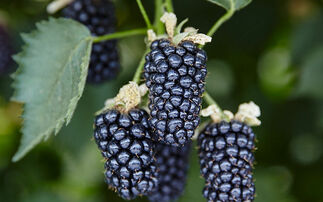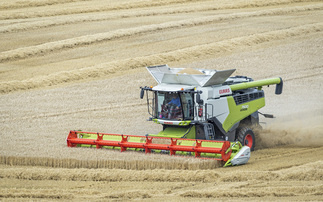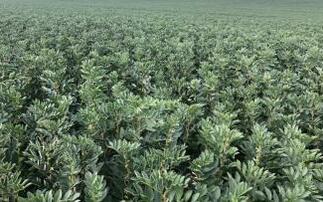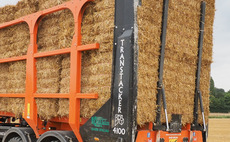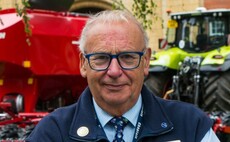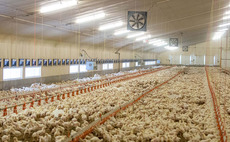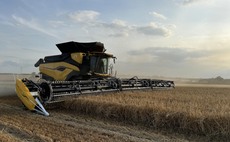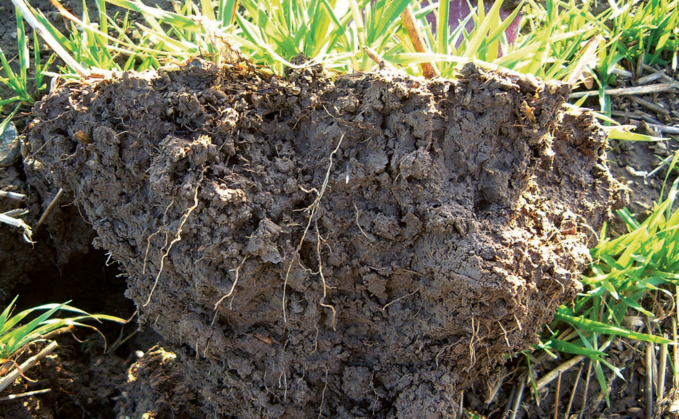
Soil is a critical part of your farms carbon footprint, but what are the core principles involved, and what is and is not possible in terms of soil and carbon?
The soils on your farm are unique, with their character coming from their parent material which controls depth, texture and stoniness. Their health, however, is directly affected by management, which can both improve or harm their structure, nutrient content, organic matter and biological activity.
Ensuring soils are in good health is critical to being able to successfully reduce your farms carbon footprint, and there is lots to think about, as NIABs head of farming systems research Dr Elizabeth Stockdale explains.
Organic matter in soil is the main store of carbon; increasing soil organic matter increases soil carbon. Storing carbon in soil is not as complicated as you might think it is like a bank; if you pay more in, you have more in the bank.
But, it is easy to mess up by spending more than you put in.
Balance
The carbon cycling processes are a balance of continual stabilisation and decomposition driven by the biology in the soil. Every organism in the soil breaks down carbon to live, so good soil health is about good cycling of organic matter, she says.
Paying more in will in-crease your organic matter. That comes from maximising photosynthesis as plants are the only thing which take carbon from the atmosphere and turn it into organic matter. So, minimising bare soil and ensuring there are living roots in the soil at all times is important cover crops, continual winter cropping or even letting a weedy stubble grow will all help.
Returning residues to soils also helps increase organic matter. This new organic matter drives aggregation and structure, helping with crop establishment and rooting, as well as improving water balance and nutrient use efficiency.
Where straw is baled, she recommends growers think about how they might offset that loss of organic matter. Straw for muck deals or fully processed waste or compost are options, if they can be obtained locally, but simply shuffling of waste does little to help a farms carbon footprint.
However, it is possible to overdo this, she says, for example, when fields growing carrots might be covered in five years worth of straw, which is like having a big Sunday lunch once a week and nothing in between.
For good soil health, regular additions of active, fresh organic matter help the cycling of carbon and this is what will drive soil structure-forming and stabilising processes, she adds.
The insider knowledge that farmers have about their own farms and soils is key to success. Many soils are not storing as much carbon as they can, and its about achieving the personal best for each soil taking its character into account. Not all of them will break world records, and that difference is what makes some ground good for, say, potatoes rather than wheat.
As a starting point, it is essential to know your soils character and its potential to hold carbon, she says. Light soils are made up of sand and silt particles like little rocks, she explains, and these cannot hold onto car-bon.
Clay, however, is active and its particles have a huge surface area, so there are many more places for organic matter to stick and become stabilised.
Right Area
In a case where muck is limited, it is important to choose the right area to spread it. Most people would choose the sandy, low organic matter area. However, it may already be holding carbon to its potential, and adding muck wont help further.
Spreading it on the heavier soils, even if they have slightly higher organic matter already, might be the right thing to do if those soils have still to reach their potential.
Soils also perform better with minimal disturbance, as this reduces decomposition losses. Intensive tillage will result in less stabilisation of any organic matter inputs in the soil.
So aim for fewer tillage operations and less tillage intensity overall reducing depth, speed and so on. This will also help reduce fuel use.
Im not suggesting you should throw the plough away though. It is about being as gentle as you can with the soil, so do the minimum required to produce a good seedbed. There is nothing inherently bad about ploughing when it is used in the right place at the right time, for instance when you need to invert weed seeds to 10-15cm.
Increasing soil organic matter is a slow process, she says, and the transition to a new equilibrium might take five to 10 years. You will see changes in three to five years, often first through improvements in soil structure, but it is slow to measure. It is also finite; soil will come to a new balance point.
It is also reversible, she adds. If you stop the increased inputs, it will start to go back-wards and that can be a tricky thing if you have put some sort of carbon credit scheme in place.
Measuring
Carbon trading is based on the carbon stock rather than concentration, which means measuring the bulk density as well as the carbon content through the soils layers, and taking account of soil stoniness, as stones cannot hold carbon.
Doing this for the UK farms involved in Bayers Carbon Initiative showed how variable the carbon stock was across farms and even within fields.
Soil carbon stock varied from 37 tonnes/hectare to 132t/ha in mineral soils within the first 30cm depth of soil, which is where an average of 63% of total soil organic carbon measured to 90cm depth was found.
The large variation does need to be accounted for when you are measuring soil carbon, but this is where local knowledge comes in along-side yield maps so farmers can select sampling sites which quantify and account for this variation.
The results, though surprising in their variability, also showed there was a positive relationship between yield and total carbon stock. Soil properties which increase car-bon storage potential, such as depth, fewer stones, and good biological activity also pro-mote crop growth and higher yields.
This in turn increases carbon returns from high root mass and crop residues from centuries of photosynthesis, she adds.
It shows that a focus on managing soils well to optimise yield can also increase the soil carbon stock and improving soil health also helps to optimise resource use in terms of water, fuel and so on. Overall, its about understanding your own farm and putting the principles into practice its good soil husbandry.
Getting it wrong...
While getting soils to their optimum can take years, it is also very easy to mess them up with a mistimed cultivation or harvest in wet conditions.
Waterlogged areas and falling pH levels also lead to less decomposition of organic matter, so the organic matter additions will not be breaking down as they should.
This is often seen clearly in the uplands, where blanket bogs develop. In some cases, a wall might separate two very different looking pastures; the green, productive side will have been limed in the 1970s.
This means the soil is slightly less acidic, producing higher quality forage, and without a spongy surface as organic matter is mixed into the soil, says Dr Stockdale.







